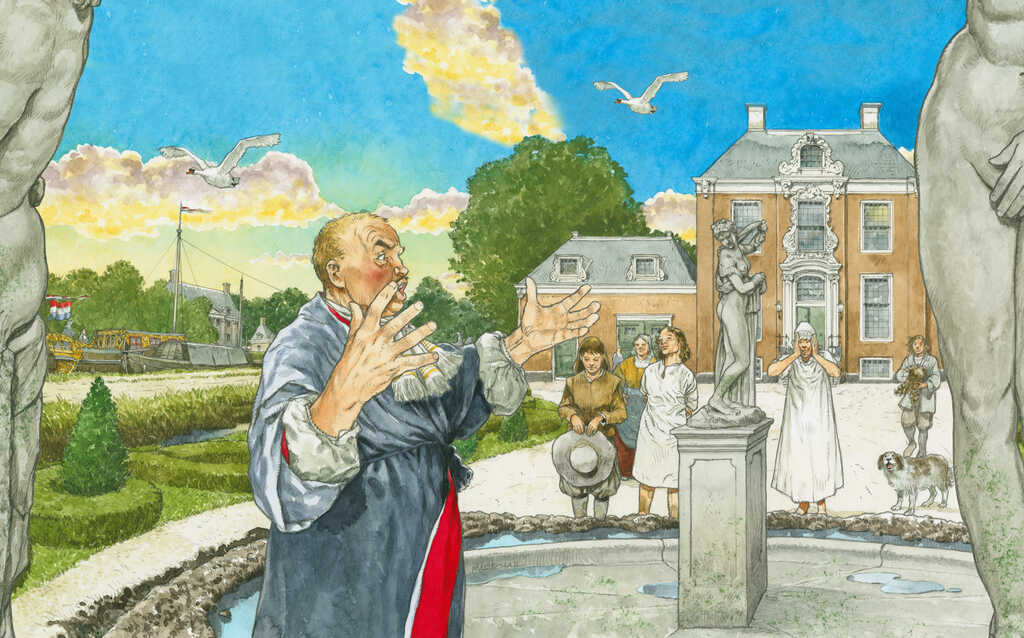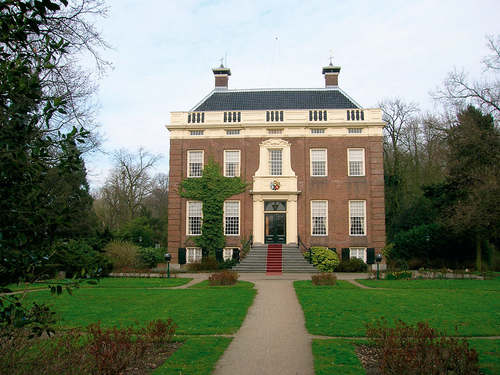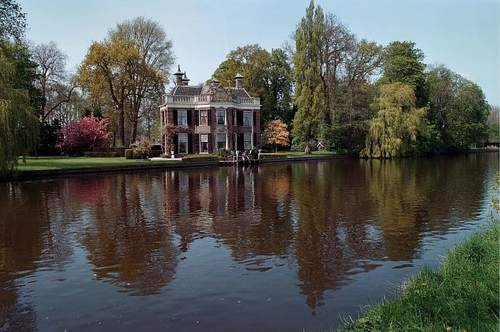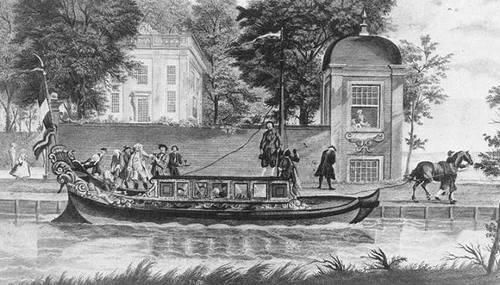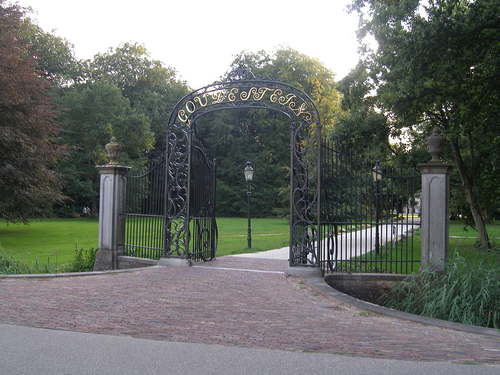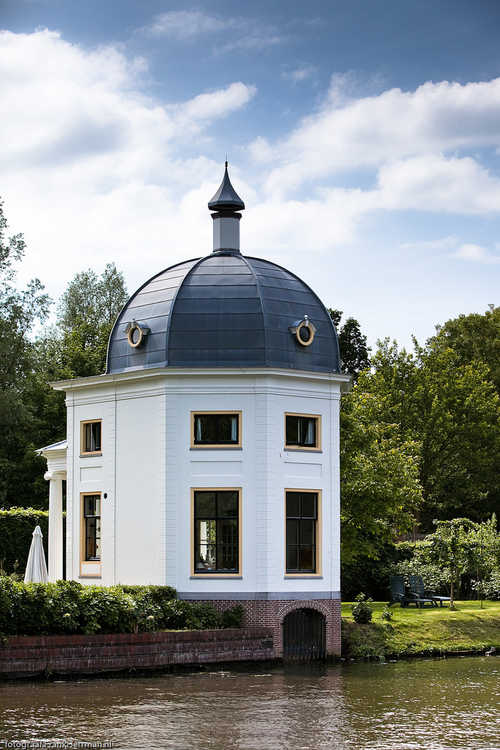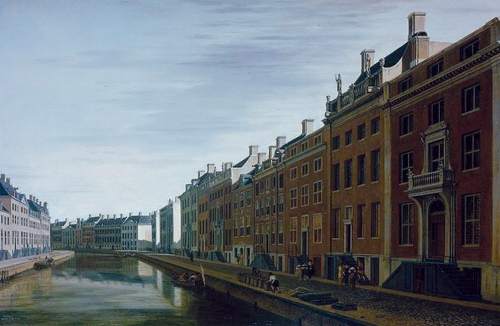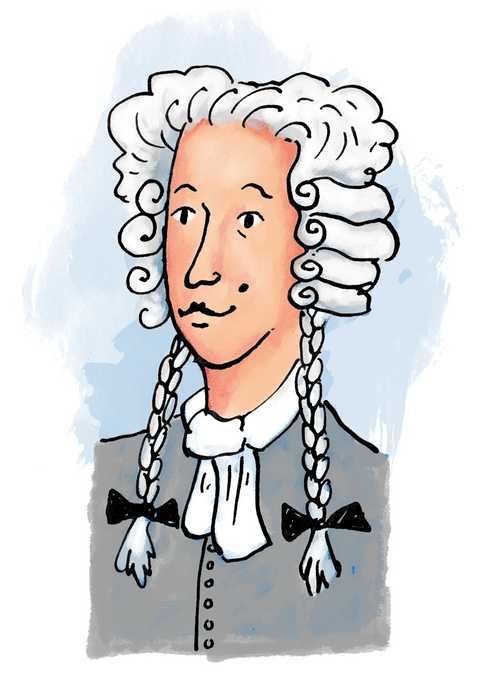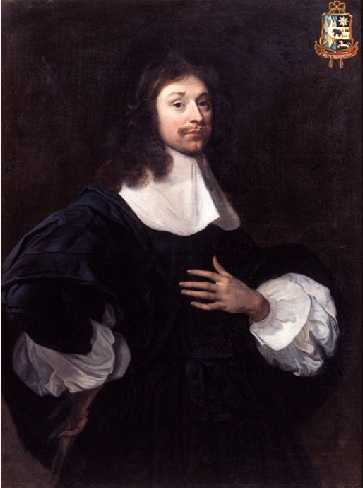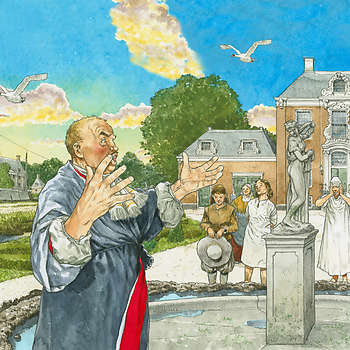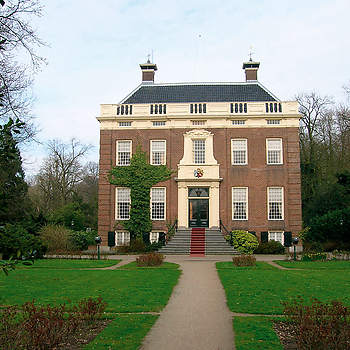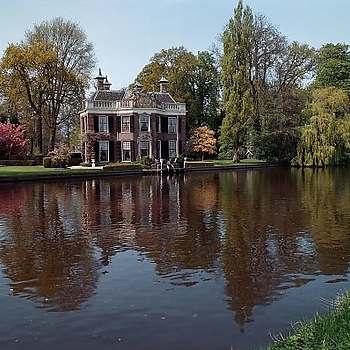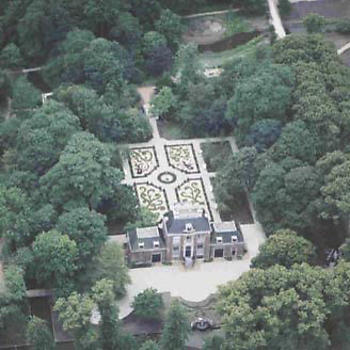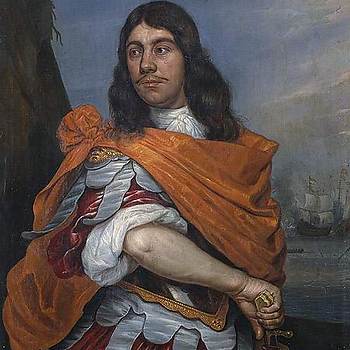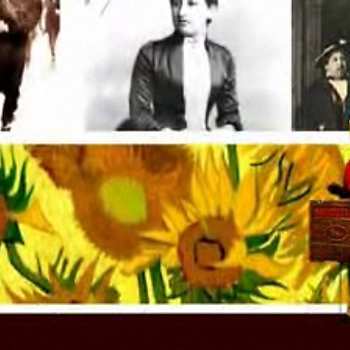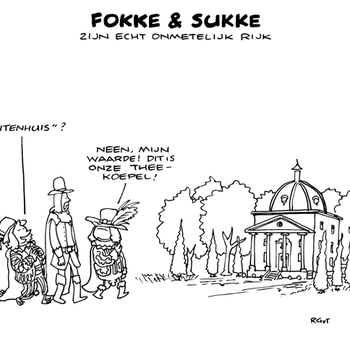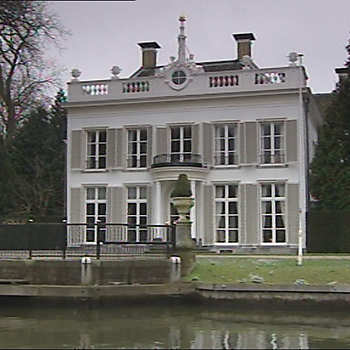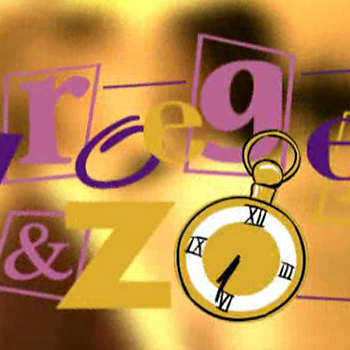Today, Goudestein mansion is the town hall of Maarssen, situated to the north of Utrecht on the River Vecht. For a long time it had been one of many country mansions along the river where wealthy residents of Amsterdam came to spend the summer.
If you take a trip on or alongside the Vecht, you will come across a great many country mansions, real palaces with magnificent gardens. This concentration along the river illustrates the immense wealth of Amsterdam in the Golden Age. Most of the mansions were built in the seventeenth century, some later. Wealthy merchants liked to escape the town in the summer months and enjoy the natural surroundings along the Vecht. Such escapes went hand in hand with large-scale relocations, usually by barge. The staff was moved as well as part of the household stocks – everyone and everything was brought along. The men visited occasionally as they had to spend a lot of time working in town even over the summer months.
Goudestein is a textbook example of what happened to country mansions. In 1608, the Amsterdam merchant Jan Jacobszoon Huydekoper bought a large farmstead in Maarssen. His son Joan, a very important man in Amsterdam – he was, among other things, elected mayor on several occasions – subsequently had the Goudestein mansion built in 1628. In 1754 the seventeenth-century house was knocked down and replaced by the current palace. Up until the twentieth century the Huydekopers continued to live in the mansion. Then, in 1955, the municipality bought it and converted it into the town hall.
The influential people from Amsterdam invited many guests to their country retreats: friends from their social circle, as well as artists and intellectuals. The famous poet and scholar Constantijn Huygens stayed at Goudestein in 1656 and apparently he enjoyed himself, for he wrote three spirited poems about the mansion.
The gardens of the houses were lovely and often still are today. They were inspired by the formal French style of landscaping, with tight geometric patterns. From this starting point, a new Dutch style evolved: ordered and geometric but with baroque elements and playful additions like theekoepels (tea house gazebos), canals, water attractions and mazes. Needless to say, everyone wanted their garden to be a showpiece and each was more beautiful than the last.
The summer life in the country mansions of the aristocracy continued in the eighteenth century, although the economy in the Netherlands was slowing down. The wealthy families, however, were still able to live off their capital. Today, most of the country mansions are no longer owned by individuals. Instead they have become tourist attractions, prestigious business premises and venues for parties.
